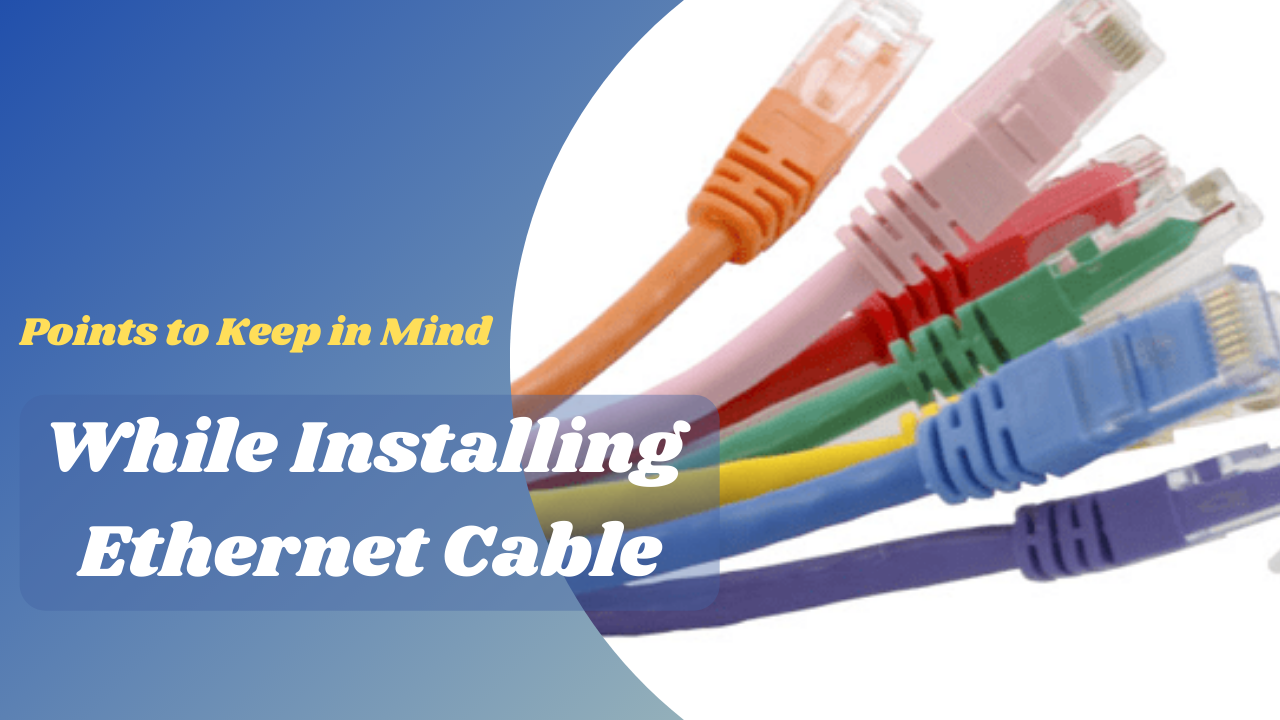As the specifications of ethernet cables bulk continue to evolve, the method of installing them becomes increasingly complex.
So, whether you’re installing Cat6 Ethernet Cable, Cat6a Ethernet Cable, or Cat5e Ethernet Cable, there are a few DOs and DON’TS to keep in mind. If you don’t know what these terms mean, don’t worry; we’ve got you covered.
Before we go any further, let us point out that a correctly placed ethernet wire lowers downtime and allows for smooth data transmission.
Furthermore, the connection between your PCs, laptops, modems, routers, adapters, or any other device remains intact and continuous (free from unnecessary interruptions).
Identify Locations/Places
You’ll need to decide where all of your ethernet cables will mass terminate at the start. After you’ve dealt with it, you’ll need to carefully design your total ethernet network installation.
Spacious
In terms of installation location, it should be sufficient enough to fulfill not only your current needs but also your future needs if you plan to upgrade or expand your network.
Cable Types and Environment
If you’re going to install ethernet cable in bulk in a location where it’ll be exposed to harsh environments, look for ethernet cables with industrial-strength qualities like UV resistance, oil resistance, the ability to withstand extreme temperatures, and long flex life.
Also, look for ethernet cables that have a braid or foil shielding to guard against EMI, crosstalk, and interruptions (clearly the signal quality will not be compromised and signal strength will be stronger).
Selecting The Right Cable
On the market, there are a variety of ethernet cables to choose from.
Which one is best for you is determined by your requirements, such as data transmission speed, bandwidth capacities, price range, the appropriate variation (discussed in the following paragraphs), and so on.
Let’s take a quick look at some of the most popular cables features.
Cat6 Ethernet Cable:
Choosing the Cat6 Ethernet Cable has the extra benefit of being backward compatible with all of its predecessors. These cables can carry data at up to 10Gbps (however there are some length and distance restrictions).
These wires offer a bandwidth capability of up to 550MHz, greater crosstalk and EMI shielding, and a longer lifespan.
Cat6a Ethernet Cable:
These cables are an upgrade to Cat6 cables, with a 750MHz bandwidth capacity and a data transfer rate of 10Gbps over a distance of 100 meters.
Cat6a Ethernet Cables are available in both pure copper and copper-clad aluminum, but the former is preferable. These cables are RoHS compliant and meet all existing regulations.
Cat5e Ethernet Cable:
This ethernet cable is still a popular choice among home users since it is inexpensive. Cat5e Ethernet cable offers a maximum data transfer speed of 1Gbps and a bandwidth capacity of up to 350MHz (sufficient for the majority of home users).
Installation Spaces – Plenum, Riser, Outdoor
This component has a significant impact on the entire ethernet wires installation process. You are only allowed to utilize plenum-rated wires in plenum spaces.
The thick, high-quality jacket material on these cables functions as a fire retardant, preventing the spread of fire. Cat6 Plenum Cable is frequently utilized to replace riser cable due to its superior safety features.
If you’re planning to install ethernet connections in the building’s riser spaces, you’ll want to use riser-rated cables. These cables’ jacket materials meet some strict safety requirements as well, but they are not as good as plenum cables’.
In riser spaces, you can also use plenum-rated wires, but the former is more expensive. As a result, for riser areas, it’s preferable to use riser-rated cables.
The Installation Process
Cross your ethernet cables at a 90-degree angle to eliminate interference.
Color Scheme:
Using multiple color schemes can help you keep track of your data lines and keep them tidy.
Always label your cords because the labeling part comes in helpful. The labeling aids you in determining the following: which cable is meant for which location, how the cable was terminated, and if the cable is for jack or ethernet.
System for Managing Wires:
It is critical to use effective and safe wire bundling equipment to organize patch cabling between racks. Also, spacing ethernet wires in a patch panel and decorating your cabling without cable-crossing or diving is preferable. The mapping is also useful for replacing or repairing items.
Avoid Running Wires in Dangerous Areas:
It’s best to avoid running cables in dangerous areas. Make sure an ethernet cable does not come into touch with ceiling tiles or runs over an electrical conduit or water pipes when installing it.
Bundling is a bad idea.
Tightly: Bundling your ethernet wires too tightly has a negative impact on the performance of your cords while also lowering the signal quality.
Taking care of racks:
Excessive heat will occur from cramming too many cables onto a single rack. This is a bad sign because your racks must remain cool. It’s also a good idea to avoid leaving your ethernet cords exposed to terminations.
Wires on the inside will be harmed as a result of this. Always use connectorized cable: Purchasing pre-connectorized ethernet cables is always preferable.
